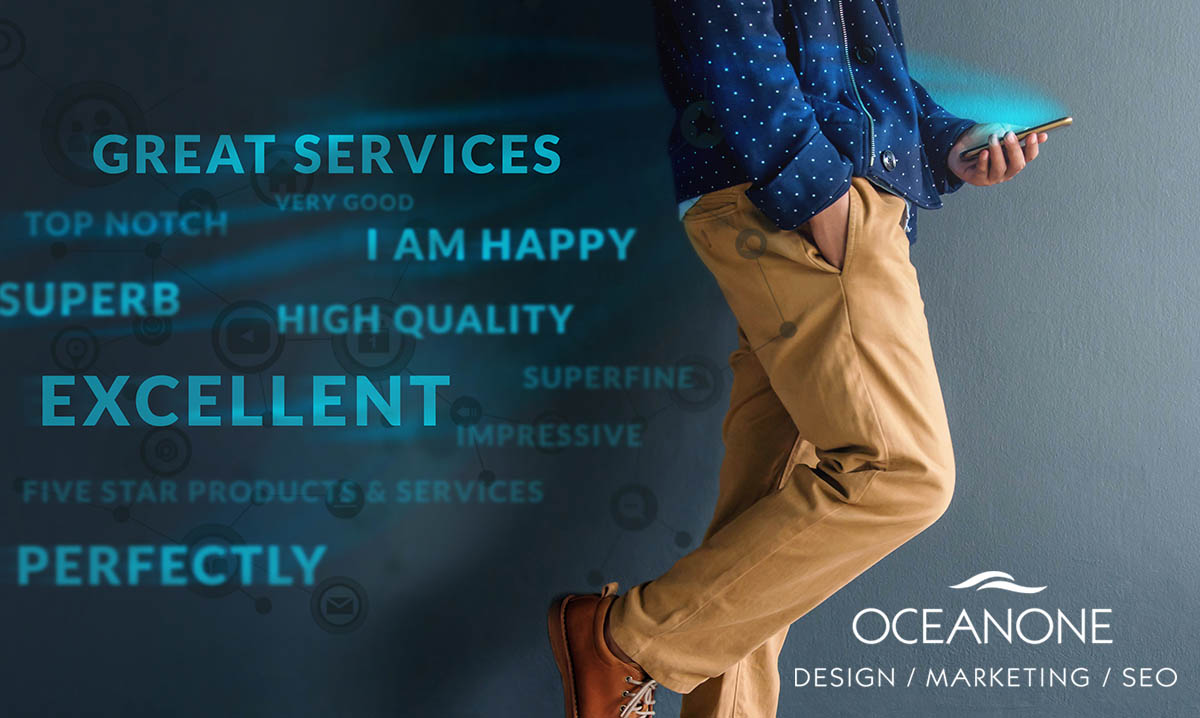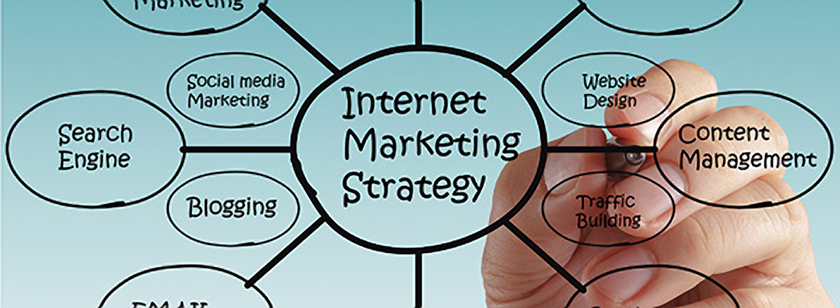
by DG | Oct 12, 2018 | Digital Marketing, Business
Every business that has a presence online, would naturally want to be able to maintain a decent reputation. No business owner would want their business to generate negative reviews, which is why they always try to keep a keen eye on social media.
Online reputation management is the term that relates to this perusal of your brand’s reputation online. This term, like every other word related to SEO, has been thrown around quite a lot recently. So much so that brand managers now don’t really know to expect from online reputation management. This brings us to the question of what exactly is online reputation management.
Is it a proven method of maintaining your reputation and local SEO online, or is it just a buzzword? Can it really help you with your reputation online?
We answer these questions and many more in the lines below, by taking a look at the nuances involved in online reputation management, and how it can positively boost your Local SEO.
What is Online Reputation Management?
For starters, online reputation management is perhaps one of the best ways to enhance your presence online. At a layman level this practice relates to studying what people are saying about you, and trying to handle their problems. There’s hardly any business out there that doesn’t have issues arising with customers. While you would ideally prefer to have the issue resolved before the customer takes the matter online, that is usually not the case.
Customers share bad experiences online, and these bad experiences act as a deterrent for other potential customers coming your way. However, you can manage these online complaints through your online reputation management system.
When dealing with negative reviews it is important write a response as soon as possible, be polite, courteous and professional. NEVER be defensive. Try to understand their problem and offer to resolve the problem even if you think they are being ridiculous. You will never come out ahead if you try argue with them.
Here we will list down some amazing tips that you can follow to enhance the utility of your online reputation management system and maintain your Local SEO online while at it.
Be Present on all Web Portals
Social media is a must for every brand. It is best for your brand to be up on social media to not only interact with potential customers, but to also listen to their grievances. A company should have a Facebook, Twitter and Google+ account at least. You can further have an Instagram, Snapchat and other social media accounts to reach out to your customers through new channels.
Now, the journey to excellent reputation management online doesn’t stop with the creation of accounts on multiple social media platforms. The real effort lies in regularly regulating and reviewing these accounts. The worst that can happen for your brand is an online review or complaint by a customer that you haven’t addressed.
This negligence on your part would not just turn that one customer away from you, but would also leave a bad impression on others. Thus, the way forward is to review these accounts and all the complaints that come on them.
Local Listings Establish Your Presence
Search engines use complex algorithms to ensure that the information they are giving out is reliable and can be trusted. As part of this, they cross-reference company information from local listings present across the web to generate information related to your phone numbers, map pointers, email addresses, postal addresses and opening and closing times. Based on concrete evidence generated through these methods, a search engine gives out the required information to your customers.
Now, if your information across multiple local listings is not updated, your local SEO campaign will suffer due to this incorrect information. Search engines will direct customers to wrong addresses and might even give old numbers. To cut out the chances of this happening, ensure that all information pertaining to your company on local listings is updated so that search engines can reference the correct source.
Build a Profile of High Quality Local Reviews
User generated content is still content, and pretty successful at it. Individual reviews might not be able to generate the same impact as a blog or a video for that matter, but by building a profile of good reviews across social media and the internet, you can boost your local SEO.
Having potentially good information associated to your brand, from organic third parties, on highly trustworthy review and social media sites, gives your Local SEO the boost it needs. These valuable reviews give search engines quite a lot of contextual information about you, which they can use to rank your company locally.
Social Proof
Believe it or not, but search engines, including Google, tend to rank local companies with better reviews higher than others that have negative reviews or no reviews at all. This is a tried and tested method by these engines to take social proof as a performance of brands.
For example, Google usually takes a look at reviews coming on its own Google My Business platform, and from other partners that their algorithms trust, including Yelp and Facebook. Based on the information from this analysis, Google’s algorithms develop the social standing of a specific organization in its local setting. The social standing includes answers to questions such as, is the company well-liked and popular? Is there sufficient evidence to suggest that the company gives bad experiences and customer services? Then, based on star ratings and reviews, Google takes the ultimate decision of how suitable your brand is for a searcher’s query.
Make the Investment
Finally, you need to make a sufficient investment to get the best out of your online reputation management plan. Reputation development often requires investment both in the form of time and money. You will obviously need dedicated members to monitor your reputation online and generate results based on that.
Other than that, there is also the need for investment in catering to customer grievances. A simple apology doesn’t make the cut anymore. You would need something along the lines of a giveaway to win their trust again, and use that complaint as a means to leverage your reputation online.
Proactive reputation management might take some time and effort while setting up, but it is a worthy investment that will definitely pay off in the long run.
BONUS TIP – Make it easier for people to leave a Google review.
Here are steps to make it easier for people to leave a Google review about your business :
- Search for your company by name in Google.
- Click on the button “Write a review”.
- A Google review box has pops up, click away for the popup window and copy the URL from the address bar.
- Shorten the URL. The URL will be very long. Use a URL shortener like bit.ly to get a nice sort URL that you can share with people.
Here an example of ours – Click To Review: https://bit.ly/2PhcT7b
We hope these tips will be helpful. If you don’t have the time to deal with all this we do have Reputation Management Services to take care of it for you. It will help with your Local SEO efforts.
Also check our article about dealing with Fake Reviews. as well as Neil Patel’s Definitive Guide to Online Reputation Management.

by DG | Oct 11, 2016 | Business, Online Marketing, SEO, Tips
Content marketing has evolved a lot over the past few years. While quality content has always been a hallmark of successful online marketing, the way people use quality content has changed.
Plenty of businesses and individuals have relied on content as a go-to marketing tool for years. And, for a long time, text-based content remained king. Most online marketing funnels, such as blog posts and link building, relied on text-based content to network and, eventually build an audience.
The evolution of technology has changed all of that. A decade ago, people didn’t have access to other forms of content, such as videos and images. Most people had dial-up Internet access, so it was difficult to access that type of content on a regular basis.
Today, most people use faster Internet connections that have evolved with the times. Video and image-based content are the norm now, and with most people watching or viewing some type of image-based content nowadays, businesses need to adapt and start marketing with that form of content, too.
2016 was a revelation for many businesses in that respect. And, there’s a reason behind that. In this article, let’s learn about why content marketing’s so important nowadays.
Why is content marketing important?
Content marketing is a necessity for businesses if they want to have a successful online marketing campaign. It even helps businesses convert prospects into leads far faster than other marketing methods have in the past and it will help your Google ranking. Here are a few other reasons why that’s the case.
Content: more than text
Content, in the early days of the web, mainly referred to text-based content like articles, blog posts and web copy. Nowadays, content is more than just text. You can lots of interactive elements and of video which is the most engaging of all.
Include text, images, audio and video . And, they’re not just useful separately, either. People now combine all four elements to create multimedia content for their audiences to view and consume.
If you write some great content, you can also re-purpose it by turing it into a slideshow and posting it on slideshare, make a video with it and post it on YouTube, Vimeo and lots of other video sites. Turn it into a PDF and post it on document sharing sites like Scribd. Maybe use it to capture leads by making it downloadable after users give you their email.
Now that technology has evolved to allow people access to information at any time, so has content.
Studies have show that longer content is gets better results. Articles with over 2,000 words get shared a lot more that shorter articles of only 500 words. The most obvious reason being that longer articles provide more value because they can get into a lot more detail.
Don’t forget about mobile, too
Mobile platforms exploded over the course of this decade—and it’s only going to go up from here.
More people access content from their mobile devices nowadays. In fact, mobile devices like smartphones and tablets are some people’s only form of web access. With the aforementioned fast becoming a reality, it’s imperative for businesses to get on board with promoting their goods and services via mobile platforms.
Of course, it’s an even better idea to start developing content befitting a mobile device. That means utilizing responsive web design. Responsive web design is a type of practice used to create websites and web pages that fit any device where people view that website or web page.
Responsive web design displays content properly, and in ways attractive enough for people to, well, want more out of that content. There’s a reason why many businesses want their websites and web pages to be responsible. Not only does it look attractive, but it’s the best practice, too.
Your content, your story
Another thing about content marketing in this decade is the phenomenon of telling your story to your audience.
Creating content that reaches out to your followers is one of the elements of having a successful content marketing campaign. Don’t believe that?
When people are encouraged to act after reading content, they’re acting because something within that content encouraged them to act. In most cases, the content appealed to them enough. It spoke to them.
You can speak directly to your audience if you create content that engages. That content can be as simple as a blog post to as intricate as a series of video advertisements geared toward showing others your work process.
People want to relate to the brands they love to buy. They also want their favorite brands to be transparent. By staying transparent, relatable and honest with your audience, you’ll gain the potential to grow that audience in the future.
Promote your old and new content
Of course, you can’t really create content that’ll languish in the depths of the web. You have to, eventually, promoting your older content alongside your new content, too.
There’s always an audience for something on the web. And, your content isn’t going anywhere, either. Content from the mid to late 1990s still exists on the web somewhere, so it’s not like your content will disappear in the next decade.
Even if the information is outdated, it doesn’t hurt to update that content. That way, you’ll have twice as much content to promote when you do decide to finally update.
As you can see, content marketing is a vital part of promoting and building a business via the web. Content marketing is so effective that it actually helps small businesses save money on online marketing. So, that alone makes content marketing worth trying at least once.

by DG | Apr 23, 2016 | Business, SEO, Web Design
Branding is a marketing technique that has the potential to elevate your business and achieve great success. It involves helping your customers to form a recognizable association with you. It also has to do with the overall experience they have when interacting with your company. Developing your brand involves capturing the essence of your business and then developing ways to articulate your message to your customers that is consistent with your brand. No matter what method is used to interact with your customers they should get a consistent experience.
Visually link your business with good design, a logo, slogan, website and colours and observe the positive results very soon. Research and really understand who your audience is. Ask questions like: What are their spending habits? Values? Concerns? Needs? How does your product/service fit into their life? Is there a certain age range that your products/services appeal to? Do they live in large cities, small towns…? The possible questions are infinite but really think it through and you will come up with many that are important for your business. By answering these direct questions and adapting your message to appeal to your audience and you will soon see positive results.
The closer the focus the more connected the buyer will feel with your brand. It is imperative when communicating that you exchange information about the product in the same way your buyer talks. For example: if they are sophisticated, intelligent and affluent, speak to them with sophistication and parallel their style. If your audience is young, free-spirited adults don’t sound like parents; simply connect with your audience on their comfort level. Clients, community members and friends should know the personality of your business. Employees must understand and carry out the persona inside the brand.
Some great ways to do this are to hire those you believe already possess the desired traits, throw company parties, be a part of community events, and hold relaxed company meetings on communicating the brand consistently. Be sure to communicate your brand message, logo and tagline on company material consistently. These include: websites, marketing, advertising, public relations, e-mail, letterheads, business cards, and product packaging.
Place your brand on any objects related to your products or services. Employees must understand the brand and know how to effectively apply the brand in their communications. Don’t let employees design their own flyers or ads without approval unless of course they have been trained and hired to do so. One thing we all know is that change happens. Therefore it’s important to evaluate and re-evaluate your brand. Simple changes without changing the overall message are needed to survival. Grow with and ahead of your buyer.
Don’t let your brand make you look out of touch.

by DG | Mar 23, 2016 | Business, Print, SEO, Web Design
Branding is important for any serious business because a company’s brand is what sets it apart from the competition. Today it is necessary for most businesses to have an online presence to stay competitive. Effective internet branding, just like your collateral material, helps bring awareness to your unique business and is key to business growths.
While Internet branding offers huge opportunities for business, in order for it to be effective one needs to attract and engage its customers. This isn’t easy on the internet. Branding is not as easy as putting up a website and adding your company logo and slogan. Your internet branding strategy should make your online brand noticeable and apparent.
Hi-tech tools are used to create an online presence for your business. Graphics and animation, compelling copy, and overall website design that reflect your company are some of the important elements that will bring your online brand alive. Good design will result in a good user experience that helps customers easily and quickly find the information they need is the key to getting customer interaction and eventually, business. Your branding plan should include good design elements and ease of use to create an effective overall impression.
A strong online image will make the difference between a customer who buys from you online or switches to your competitors. Online customers can just leave your site and go to your competitors at the click of a mouse – easier than walking out of your store and that’s pretty easy. A lot depends on the impression they get from your site. Branding seeks to convey an immediate unique message about your business to your target clients.
As you can see, there are many requirements for a successful branding strategy. Hiring an experienced, professional web design company will put you on the right track in creating an online presence that will become a valuable asset to your business.




